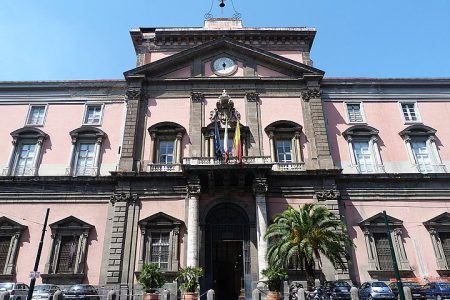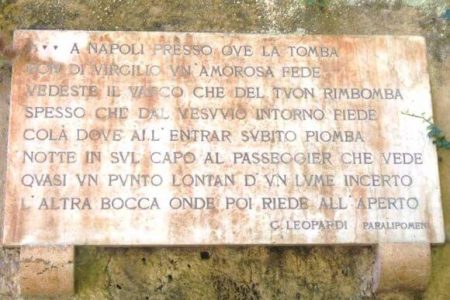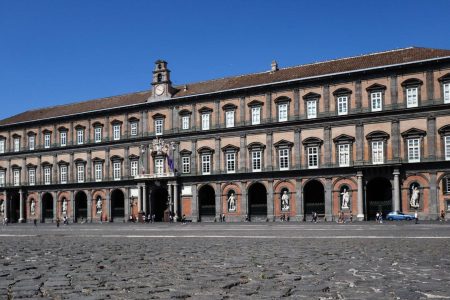Table of Contents
Are you looking for a destination for a fun outing and want to learn more about the foundation of Naples and Cuma? Here, we try to give you the right information.
Among the countless magical places that the Campania offers to explore, some are really easy to reach.
One only needs to inform oneself, lace up one's shoes, and take a walk to see everyday places with fresh eyes, with a dash of resourcefulness and curiosity to spare, the same ingredients that prompted the ancient Greeks to enter the colonies of Cumae and Naples, years and years ago.
The Greek colony of Cumae
Italy's first Greek colony, the foundation of Kýmē, which means "wave" in Greek, dates back to 740 BCE. Visiting the Archaeological park of the excavations of Cuma is a must. The oldest finds date back to 720 B.C., but every year, excavations reveal many surprises.
The area where the Greek settlers settled was already inhabited by local, probably Osco-Sabellian, peoples who were driven out. The Cumans located in the hills theacropolis, which can still be visited today, and its religious buildings.
In the former soldiers' dormitories of the fortress, arranged in a continuous sequence on two levels, the visit begins with the section devoted to Cumae, located on the second level and consisting of twenty-four rooms in which the history of the site is illustrated, from the 9th-century Opian settlement.
You might be interested
Guided tour of the National Archaeological Museum in Naples
per person Book
Guided tour of the wonders of Naples: Virgil's tomb at Virgilian Park
per person Book
Private guided tour of the Royal Palace of Naples
per person Book
Many of the finds from the Cumaean Excavations are preserved at the Naples National Museum and to the Campi Flegrei Archaeological Park.
Cuma's crowning achievement is theSybil's Cavern, one of two in the Phlegrean territory. The gallery was discovered in May 1932. Archaeologist Maiuri recognized it as the place where the Sibyl, prophetess of the God Apollo, received her worshippers and foretold their future. Today it is believed that the long tunnel was excavated for military purposes.
Greek Naples, Parthènope and Neapolis
After colonizing Cumae, the Greeks stopped at Parthènope At the end of the 8th century BC.
Founded on the Mount Echia, was not a city proper, but a epineion, that is, a very small military and commercial maritime station, devoid of major monuments. Originally, in short, Naples was composed "only" of a network of roads.
Mount Echia is a 60 m high hill overlooking the sea. Toward the land, it was isolated by a dome, an artificially dug trench, with its necropolis on the hill to the side. In front of Mount Echia was an offshoot that before, was probably joined to the same mountain. On this small island, called islet of Megaride, where today stands the Castel Dell'Ovo, traces of many settlements, even Phoenician, have been found.
After two centuries, following the victory of the Greeks over the Etruscans, the Cumanians built a proper city, modeled after Syracuse, choosing the very islet of Megaride, with an area four times the size of Mount Echia, about 80 hectares, of the same height, defended and bordered by two riverbeds of torrential waters, to the east and west.
Neapolis, "the new city" was built on this kind of false plane that slopes down from the north to the south.
The Decumani and the agora
The city's urban plan is built, even today, on the ancient road system. There are three major thoroughfares that dominate the historic center of Campania's capital city and are called the Decumani. These streets, intersected by side streets so as to form a grid, were laid out at different heights to slope gradually toward the sea. Such a type of structure, stepped, gives the inhabitants a full view of the gulf, a scenic view of the city.
L'Naples agora, the main square of the polis, corresponds to the area of the current St. Gaetano Square where the temple of the Dioscuri Castor and Pollux, the twin sons of Zeus, deities worshipped by the Cumans, was located as early as the 5th century.
The arrival of the Romans in Naples
The Romans, began to be present in Naples from the end of the fourth century, keeping the Greek character of the city intact until the late imperial age. Naples was occupied in 327-328 B.C., and the legionaries remained there so as to continue to have control of the harbor. In 326, the Romans settled permanently in the city, allowing the inhabitants to maintain their cults and language.
Magna Graecia
Cumae and Naples are counted among the oldest cities in the Magna Graecia. When it comes to Magna Graecia, in Greek "Megálē Hellás" means the set of colonies founded in southern peninsular Italy and eastern Sicily between the 8th and 6th centuries BC.
These poleis reached their apogee in the 6th century BC. They enjoyed independence and autonomy, which is why they were often at odds with each other, a rivalry that in time would lead to their weakening and conquest by the Romans.
The choice of colonies
The expansion of Magna Graecia developed in two directions: eastward into the Black Sea and westward into the Mediterranean Sea.
Following in the footsteps of Achaeans and Cretans, the Greek people moved away from their homeland to establish new colonies, driven by political and economic reasons, but also by curiosity, instilled by Homeric tales.
Before departure, an ecist, that is, the expedition leader, would question theoracle of Delphi for instructions on where to establish the new colony. Meanwhile, the motherland organized the expedition and provided ships, food, engineers and architects.
Thanks to the discovery of Greek artifacts from periods before the 8th century B.C., we know that the sites chosen for founding had to be located near landmarks. After commercial frequentation of the areas concerned and before the colony was founded, some were sent first to observe the potential new colony. The new towns gave a better opportunity for settlers to live in areas near waterways, fertile plains, with a climate similar to that of the motherland.
Thus took place the founding of Naples and Cumae.
The structure of the poleis
Once the colony was founded, the defensive walls of the polis were built. Land was divided up and given to the settlers; temples were built, but as in the case of Cumae, the newcomers also had to come to terms with the local Italic populations. Each city featured an acropolis, or "upper city," housing spaces reserved for religious ceremonies and sacrifices, and a "lower city," with irregular layout and narrow streets. In this sense, as we pointed out earlier, both Cumae and Naples trace the Greek model.
In short, visiting Naples and Cumae can become a wonderful full immersion in Greek and Roman history.




0 Comments